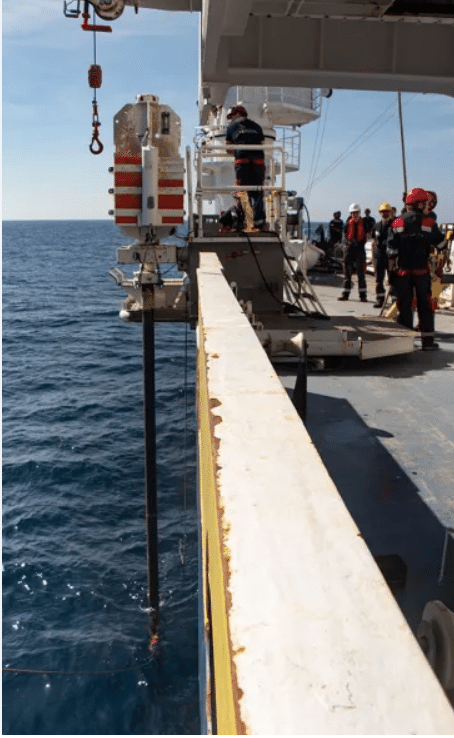On 26 October 2023, Nature Geosciences published “Millennial atmospheric CO2 changes linked to ocean ventilation modes over past 150,000 years”.
The ventilation of deep ocean waters, which are rich in carbon, can strongly affect CO2 but little is known about its history over the millennia.
Measurements of the paleo-concentration of CO2 in the air bubbles of polar ice cores show - for the cold stages (stadials) in the North Atlantic over millennia - with enigmatic contrasting trends (increases, decreases or stability). This article presents a high-resolution record - well dated over the last 150,000 years - of variations in the acidity of the deep waters of the North Atlantic. It reveals five ocean ventilation modes for the cold stages and their consequences for carbon storage in the ocean and for variations in CO2 atmospheric.
Our data (Boron/Calcium ratio, carbonate ion proxy (CO3(2-)) measured on a species of benthic foraminifer, along a sediment core from the Iberian margin) show that during stages associated with a strong increase in CO2 At the same time, the strongly ventilated Southern Ocean released large quantities of carbon from its deep waters. Other cold phases were characterised by poor ventilation of the Southern and North Atlantic Oceans, which favoured the accumulation of carbon in the deep ocean, slowing the transfer of CO2 to the atmosphere, or reversing it, with the result that CO2 atmospheric.
This article shows that on a millennial scale, ocean carbon storage and CO2 are modulated by several oceanic ventilation modes resulting from the interaction of the two polar regions, and not just the Southern Ocean.
J. Yu, R. F. Anderson, Z. D. Jin, X. Ji, D. J. R. Thornalley, L. Wu, N. Thouveny, Y. Cai, L. Tan, F. Zhang, L. Menviel, J. Tian, X. Xie, E. J. Rohling & J. F. McManus
Contactauthor of the summary Fr.
Nicolas THOUVENY
Photos © Archives IPEV (Paul-Emile VICTOR Polar Institute)



